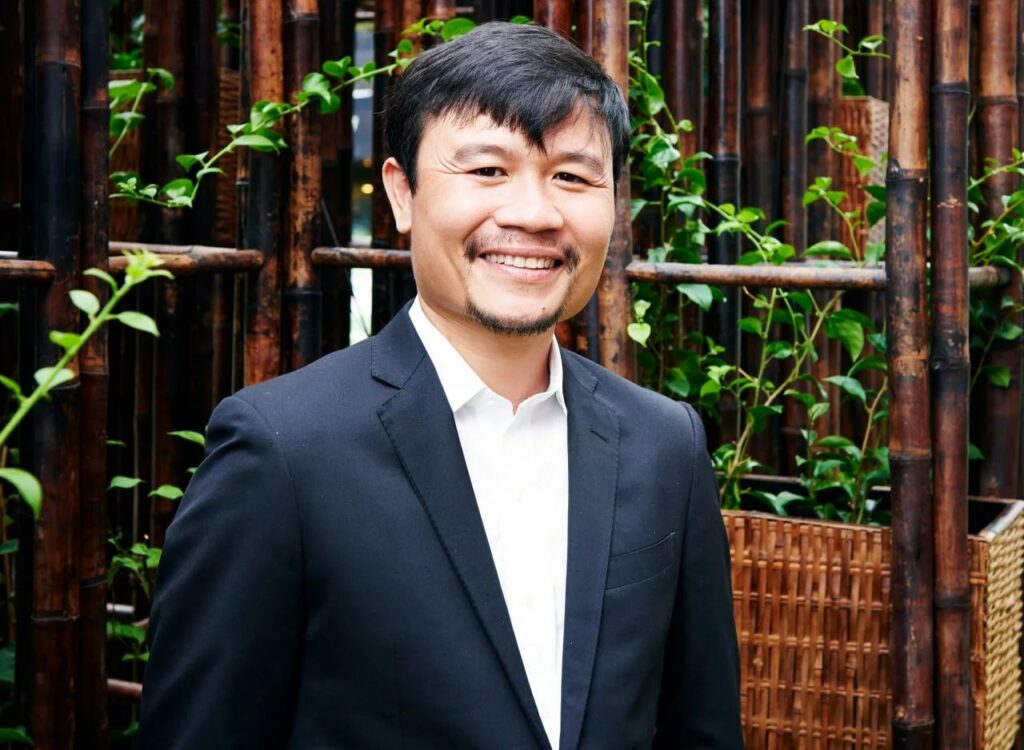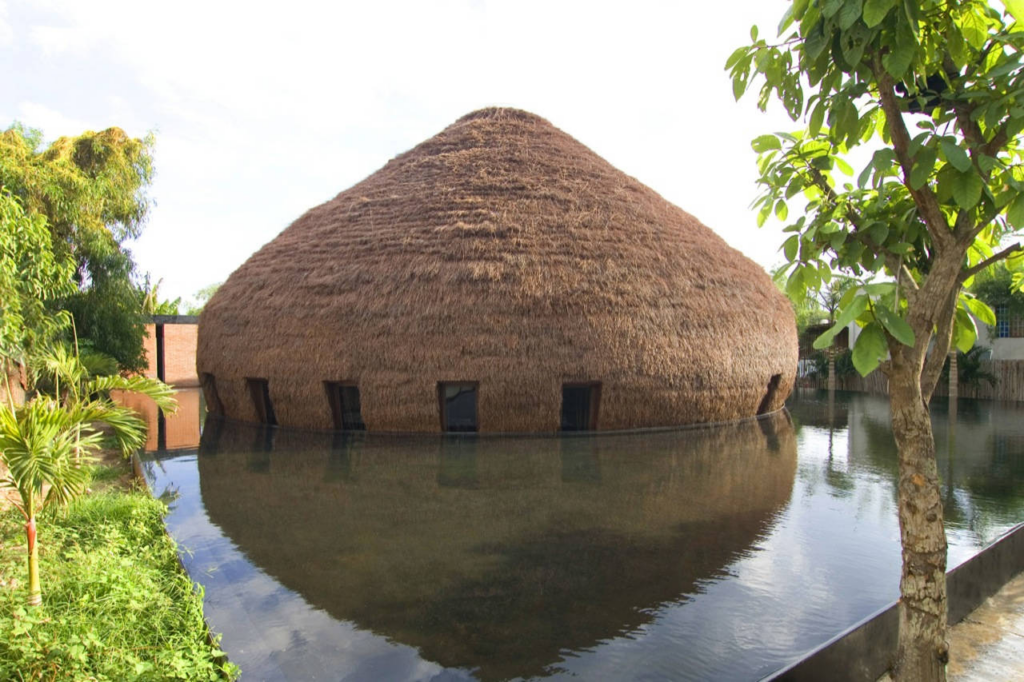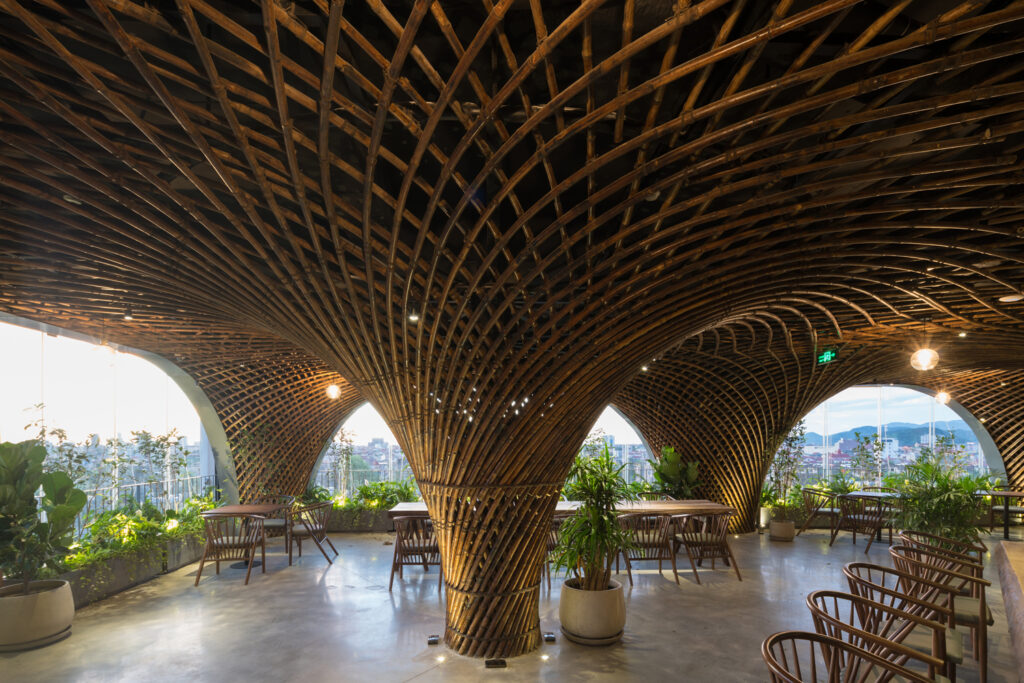Unlock Premium, Members-Only Content
Your source for the most relevant updates in sustainable construction
Vo Trong Nghia’s architectural journey is a bold blend of sustainability, innovation, and deep respect for nature. Often referred to as a visionary in the green architecture arena, Nghia’s designs breathe life into modern structures with traditional materials and methods. This is the story of how a boy from Quảng Bình turned into one of the most influential architects of his generation.
Biography of Vo Trong Nghia

Early Life and Education
Born in 1976 in Quảng Bình, Vietnam, Vo Trong Nghia’s journey into architecture began far from the sprawling urban landscapes he would later transform. His early exposure to Vietnam’s lush, rural landscapes deeply influenced his design philosophy. Nghia pursued his higher education at the Nagoya Institute of Technology and the University of Tokyo, where he mastered the art of blending modern architectural principles with environmental consciousness.
| Education Milestones | Details |
|---|---|
| Undergraduate | Nagoya Institute of Technology |
| Masters | University of Tokyo |
| Foundation | Established Vo Trong Nghia Architects in 2006 |
Philosophical Foundations
Vo Trong Nghia’s philosophy is rooted in a profound respect for nature. He advocates for the use of sustainable materials like bamboo and supports the integration of green spaces in urban designs. His commitment is to architecture that not only serves human needs but also enhances the environment. This philosophy has not only shaped his designs but has also propelled him to the forefront of the green architecture movement in Asia and beyond.
Vo Trong Nghia: Philosophical Approach to Architecture
Sustainable Design Principles
Vo Trong Nghia’s approach to architecture is revolutionary, focusing on sustainability at every step of the design and construction process. His commitment to using local, sustainable materials like bamboo is well-documented. Bamboo, fast-growing and versatile, is a hallmark of his work, seen in projects from residential homes to large educational institutions.
Connection with Nature
A key element of Nghia’s architectural philosophy is the concept of ‘biophilia’, an innate love for the natural world. He designs spaces that are not just structures but experiences that reconnect humans with nature. His projects often feature large open spaces, green roofs, and walls that allow for maximum natural light and airflow, reducing the need for artificial heating and cooling. This not only conserves energy but also creates healthier living environments.
| Core Design Elements | Description |
|---|---|
| Natural Light | Maximizes use of daylight |
| Green Roofs | Reduces urban heat, manages rainwater |
| Local Materials | Promotes sustainability and local economies |
Vo Trong Nghia’s work is a testament to the power of integrating traditional materials and modern design techniques. His buildings stand not merely as structures but as vibrant, living embodiments of his architectural philosophy. As we dive deeper into his signature projects and architectural style, we see a consistent theme: a reverence for the natural world and a commitment to sustainable practice that challenges the conventional boundaries of architecture.
Vo Trong Nghia: Signature Projects and Architectural Style
Vo Trong Nghia’s portfolio is studded with innovative projects that not only push the boundaries of traditional architecture but also promote sustainability and a harmonious relationship with nature. His projects are scattered across Vietnam and are notable for their distinctive green features and the integration of local materials.
Notable Projects
Each of Vo Trong Nghia’s projects carries his signature style—fluid, green, and sustainable. Here are some of his most acclaimed works:
- Stacked Planters House: This residential structure in Ho Chi Minh City is famous for its unique design that incorporates green spaces within vertical layers, promoting air quality and natural cooling
- Farming Kindergarten: This project is designed with a continuous green roof that provides food and a safe outdoor playground for the children. It’s an exemplar of how educational buildings can enhance learning and health
- Bamboo Wing: Located at the Flamingo Dai Lai Resort, this open-air restaurant is a testament to the potential of bamboo, showcasing its strength and flexibility in a striking, curvilinear form
Vo Trong Nghia´s Architectural Style
Vo Trong Nghia’s style is deeply influenced by his philosophy of sustainability and his Vietnamese heritage. His buildings often feature:
- Green Roofs and Walls: These are not just aesthetic elements but functional features that reduce heat, manage stormwater, and improve air quality.
- Natural Materials: Primarily bamboo and locally-sourced stones and woods are used, reducing the carbon footprint associated with transportation and supporting local industries.
- Open Spaces: To encourage airflow and natural light, his designs often include large windows and open areas that help reduce the building’s energy use.
Vo Trong Nghia and Innovative Use of Bamboo in Construction
Bamboo is at the heart of Vo Trong Nghia’s architectural practice. His innovative use of this material has not only put him on the global map but also revived interest in traditional Vietnamese building techniques.
Why Bamboo?
Here’s why Vo Trong Nghia champions bamboo in his projects:
- Sustainability: Bamboo is a fast-growing, renewable resource that is abundantly available in Vietnam.
- Durability: Treated bamboo has a strength comparable to concrete and steel, making it a practical choice for construction.
- Aesthetics: Bamboo adds a unique aesthetic appeal with its natural texture and form, aligning with Nghia’s vision of biophilic design.
Vo Trong Nghia: Bamboo Projects Highlights
Several of Nghia’s projects have utilized bamboo extensively, each showcasing its potential differently:

- Winds and Water Bar: This project features a dome-shaped bamboo structure that demonstrates the material’s flexibility and durability.

- Nocenco Cafe: Here, bamboo is used to create a swirling ceiling that transforms the space into a cave-like atmosphere, proving bamboo’s versatility in modern commercial spaces
| Project | Use of Bamboo | Notable Features |
|---|---|---|
| Winds and Water Bar | Structural and aesthetic element | Dome-shaped, open-air design |
| Nocenco Cafe | Interior design element | Swirling bamboo ceiling, natural ambiance |
Through these projects, Vo Trong Nghia not only showcases bamboo’s potential in modern architecture but also sets a precedent for sustainable construction practices worldwide. His work continues to inspire architects and designers to think creatively about the materials they use and the impact of their work on the environment.
Challenges and Achievements in Green Architecture
Vo Trong Nghia’s commitment to green architecture has not come without its set of challenges. Yet, his perseverance has led to significant achievements that have not only advanced his career but also the field of sustainable architecture in Vietnam and globally.
Facing the Challenges
Despite the growing global emphasis on sustainable practices, Vo Trong Nghia has faced several challenges in advocating for green architecture:
- Regulatory Hurdles: Navigating building codes and regulations that are not always conducive to innovative, sustainable practices has been a significant challenge
- Material Limitations: While bamboo is a versatile and sustainable material, its acceptance and use in mainstream construction require overcoming significant prejudices and technical challenges
- Cost Implications: Initially, the cost of integrating substantial green elements can be higher than traditional building methods, posing financial challenges for clients
Celebrated Achievements
Vo Trong Nghia’s dedication has been recognized through numerous awards and accolades, which highlight his impact on the architectural world:
- International Awards: His firm has won multiple awards at the World Architecture Festival and other international platforms for projects like the Farming Kindergarten and Stacked Planters House
- Promoting Green Building Practices: Beyond individual projects, Nghia’s advocacy has influenced policy changes towards more sustainable urban planning in Vietnam
| Achievement | Details |
|---|---|
| World Architecture Festival | Multiple awards for sustainability and design excellence |
| Policy Influence | Advocated for green roof policies in urban developments |
Future of Urban Architecture in Vietnam
Vo Trong Nghia’s vision extends far beyond his completed projects. His future initiatives and ongoing plans aim to transform urban landscapes into more sustainable and environmentally friendly spaces.
Upcoming Projects
Vo Trong Nghia continues to push the boundaries with ambitious projects designed to integrate nature into urban environments:
- Green City Plans: He is involved in several large-scale urban projects aimed at increasing green spaces in Vietnamese cities to combat urban heat and improve air quality
- Sustainable Housing Developments: Plans for residential projects that emphasize sustainability from the ground up, using local materials and incorporating significant green spaces
Vision for Vietnam’s Urban Future
Nghia’s long-term vision includes:
- Educational Outreach: Increasing awareness and education on sustainable practices among architects and urban planners.
- Policy Advocacy: Working with government bodies to revise and improve regulations to support sustainable development.
| Initiative | Goal | Impact |
|---|---|---|
| Urban Greening Projects | Increase green spaces in cities | Reduce urban heat, improve air quality |
| Sustainable Housing | Develop eco-friendly residential areas | Promote sustainability in everyday living |
Vo Trong Nghia’s contributions are set to leave a lasting impact on Vietnam’s architectural landscape, proving that sustainable design is not only viable but essential for the future.
Vo Trong Nghia Insights and Philosophy
Vo Trong Nghia’s approach to architecture is deeply personal, reflecting his broader life philosophy that emphasizes harmony with nature, mindfulness, and sustainability. His beliefs not only shape his architectural designs but also influence his lifestyle and interactions with the community.
Life Philosophy
Nghia’s philosophy extends beyond architecture into his daily life. He is a practitioner of meditation, which he believes enhances focus and creativity. This mindfulness permeates his work, encouraging a thoughtful approach to environmental impact and sustainability.
- Five Precepts: Nghia adheres to the five precepts of Buddhism—avoiding harm, theft, misconduct, falsehood, and intoxicants. He believes that these principles should guide not only personal behavior but also professional practices, making his work inherently ethical and honest.
Vo Trong Nghia: Impact of Architecture on Society
Vo Trong Nghia’s work has not only transformed cityscapes but also significantly impacted society’s view on sustainable living and architectural practices. His projects serve as benchmarks for integrating ecological designs into modern urban developments.
Architectural Impact on Community and Environment
The impact of Nghia’s architecture extends into the communities and environments they inhabit:
- Green Spaces in Urban Areas: His designs incorporate extensive green spaces, which improve air quality and provide urban dwellers with much-needed natural environments.
- Education Through Design: Many of his projects, such as the Farming Kindergarten, are educational in nature, teaching young generations the importance of sustainability and connection to nature.
Advocacy and Future Directions
Nghia’s influence is not limited to his buildings; he is actively involved in advocacy for sustainable architectural practices:
- Policy Advocacy: He works with government bodies to encourage policies that favor green building practices and sustainable urban planning.
- Public Speaking and Mentorship: Nghia frequently speaks at conferences and seminars, sharing his vision for sustainable architecture and mentoring young architects and students.
| Impact Area | Description |
|---|---|
| Urban Transformation | His buildings and designs promote sustainable urban living |
| Educational Impact | Projects incorporate educational elements for sustainability |
| Policy and Advocacy | Works to influence policies towards more sustainable practices |
Through his innovative designs and personal philosophy, Vo Trong Nghia continues to inspire a shift towards more sustainable and environmentally conscious architectural practices worldwide. His impact on society underscores the role of architects not just as builders of structures, but as influential figures in shaping future generations and policies.
Vo Trong Nghia and The Role of Technology in Modern Architecture
In the context of modern architecture, Vo Trong Nghia leverages technology not only to enhance design and construction processes but also to promote sustainability and reduce environmental impact.
Technology in Nghia’s Architectural Practice
Technology plays a crucial role in Nghia’s work, enabling precision, efficiency, and innovation in his architectural projects:
- Design Software: Utilizing advanced design software helps in creating complex geometrical structures like those seen in his bamboo works, which require precise calculations for sustainability and safety.
- Sustainable Tech Integration: Technologies such as solar panels, passive cooling systems, and green roofs are integrated into his projects to enhance energy efficiency and reduce carbon footprints.
| Technology Type | Application in Architecture | Benefit |
|---|---|---|
| Design Software | Precision in structural design and aesthetics | Enhanced capability to execute complex designs |
| Sustainable Technologies | Integration in building systems (e.g., solar panels, green roofs) | Improved energy efficiency and reduced environmental impact |
Innovation and Future Technologies
Looking forward, Nghia is exploring the use of emerging technologies to further push the boundaries of sustainable architecture:
- Material Innovations: Research into new sustainable materials that can replace conventional construction materials, reducing environmental degradation.
- Smart Buildings: Incorporating IoT (Internet of Things) and AI (Artificial Intelligence) to create buildings that can adapt to their environment, optimizing energy use and enhancing living conditions.
| Innovative Area | Focus | Potential Impact |
|---|---|---|
| Material Innovations | Development of new, eco-friendly materials | Reduction in the ecological footprint of buildings |
| Smart Building Technologies | Use of AI and IoT in building management | Enhanced sustainability and occupant comfort |
Vo Trong Nghia’s adoption and advocacy of technology in architecture not only enhance the functionality and sustainability of his projects but also exemplify his forward-thinking approach to the future of urban development. Through his work, he continues to demonstrate how technology and traditional methods can merge to create innovative, sustainable solutions in the field of architecture.
Policy Advocacy for Sustainable Architecture
Vo Trong Nghia’s influence extends beyond the blueprints of his architectural creations; he is a fervent advocate for policy changes that support sustainable development practices. His engagement with policy makers aims to transform the regulatory framework to better support green architecture.
Advocating for Green Policies
Nghia works closely with government bodies to advocate for policies that facilitate sustainable building practices, such as:
- Green Roof Mandates: Pushing for regulations that require green roofs on new buildings to mitigate urban heat islands and improve air quality.
- Sustainable Material Incentives: Lobbying for incentives that encourage the use of sustainable materials like bamboo, which reduce the environmental impact of construction.
| Policy Area | Objective | Expected Outcome |
|---|---|---|
| Green Roof Regulations | Mandate the integration of green roofs in new developments | Decrease urban heat and increase urban green spaces |
| Incentives for Sustainable Materials | Encourage the use of environmentally friendly materials | Reduce the carbon footprint of new constructions |
Vo Trong Nghia´s Global Influence and Recognition
Vo Trong Nghia’s work has garnered international attention, placing him at the forefront of the global movement towards sustainable architecture. His innovative use of materials and commitment to green principles have earned him numerous accolades and a place in the international discourse on sustainable development.
International Awards and Exhibitions
Nghia’s architecture has been recognized worldwide, receiving multiple international awards and being featured in global exhibitions:
- Exhibitions: His work has been showcased in architectural biennales and exhibitions around the world, highlighting his commitment to sustainability and innovative design.
- Awards: Including prestigious awards from architectural organizations recognizing his contributions to green architecture.
Vo Trong Nghia: Conclusion
Vo Trong Nghia’s journey in architecture is a testament to his profound commitment to integrating sustainable practices into modern architectural design. Through his innovative use of natural materials, advocacy for environmental policies, and educational efforts, he has significantly impacted both the architectural field and broader societal attitudes towards sustainable living. His work not only transforms physical spaces but also encourages a deeper connection between people and their natural environment, paving the way for a more sustainable future in urban development. As the world continues to confront environmental challenges, Vo Trong Nghia’s legacy offers a blueprint for a greener, more sustainable architectural practice that harmonizes with the earth’s ecosystems.
If you want to learn about our consultancies in Portuguese language, click here.
Unlock Premium, Members-Only Content
Your source for the most relevant updates in sustainable construction